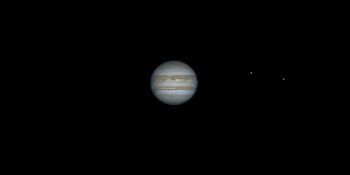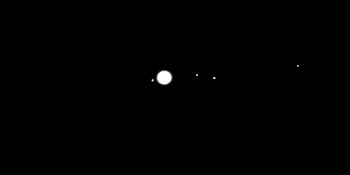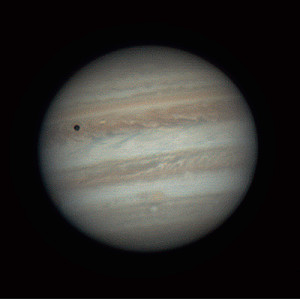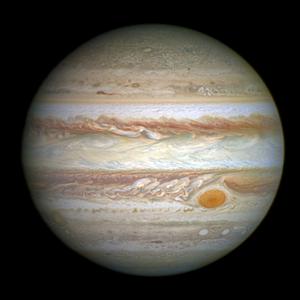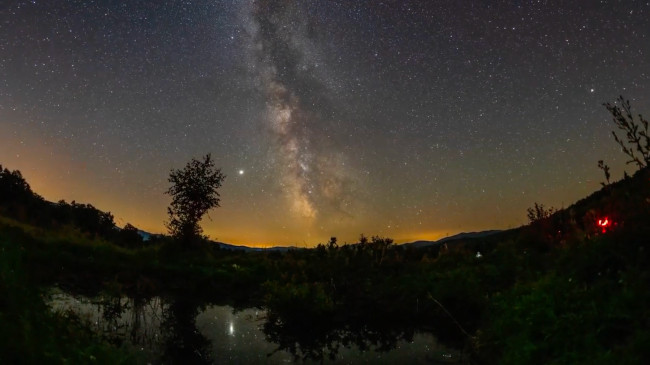Glossary term: 木星
Description: 木星是太陽系中最大的行星,也是距離太陽第五遠的行星。它是一顆氣態巨行星,半徑為 7.13 萬公里,大約是地球半徑的 11 倍。木星的質量(地球質量的 318 倍)比太陽系中所有其他行星和較小天體的總和還要大。
它與太陽的典型距離為 7.78 億千米,約為 5 個天文單位(地球與太陽的距離),完成一個軌道需要不到 12 年的時間。截至 2023 年,天文學家已經探測到 90 多顆圍繞木星運行的衛星或天然衛星。
它肉眼可見。它的英文名稱源自羅馬的眾神之王。用小型望遠鏡觀察,我們可以看到不同顏色的雲帶和一個巨大的紅色圓形風暴區(即所謂的大紅斑)。在過去的幾十年裡,已經有一些太空探測器被送往木星,2016 年,美國國家航空航天局的 "朱諾 "號宇宙飛船開始對木星及其衛星進行更詳細的探索。
Related Terms:
See this term in other languages
Term and definition status: The original definition of this term in English have been approved by a research astronomer and a teacher The translation of this term and its definition is still awaiting approval
This is an automated transliteration of the simplified Chinese translation of this term
The OAE Multilingual Glossary is a project of the IAU Office of Astronomy for Education (OAE) in collaboration with the IAU Office of Astronomy Outreach (OAO). The terms and definitions were chosen, written and reviewed by a collective effort from the OAE, the OAE Centers and Nodes, the OAE National Astronomy Education Coordinators (NAECs) and other volunteers. You can find a full list of credits here. All glossary terms and their definitions are released under a Creative Commons CC BY-4.0 license and should be credited to "IAU OAE".
If you notice a factual or translation error in this glossary term or definition then please get in touch.
Related Media
木星的自轉,作者 Vishal Sharma,印度
Credit: Vishal Sharma/IAU OAE
License: CC-BY-4.0 Creative Commons 姓名標示 4.0 國際 (CC BY 4.0) icons
木衛影片2,Nicolas Hurez,Paul-Antoine Matrangolo,和Carl Pennypacker,美國
Credit: Nicolas Hurez,Paul-Antoine Matrangolo 和 Carl Pennypacker/IAU OAE
License: CC-BY-4.0 Creative Commons 姓名標示 4.0 國際 (CC BY 4.0) icons
木星、木衛一及其陰影,作者:Ralf Burkart,德國
Credit: Ralf Burkart/IAU OAE
License: CC-BY-4.0 Creative Commons 姓名標示 4.0 國際 (CC BY 4.0) icons
木星
Credit: 美國國家航空航天局、歐空局和 A. Simon(戈達德太空飛行中心) credit link
License: CC-BY-4.0 Creative Commons 姓名標示 4.0 國際 (CC BY 4.0) icons
流動的夜空
Credit: Robert Barsa/IAU OAE
License: CC-BY-4.0 Creative Commons 姓名標示 4.0 國際 (CC BY 4.0) icons
